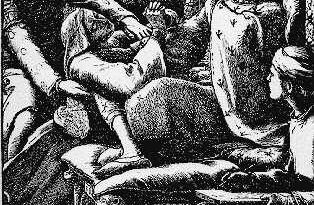Solemnity of Christmas
Massimo Palombella

In that frail and defenceless child that we contemplate today there are all our weaknesses, our unresolved issues, everything before which we “fail”, are afraid and tend to avoid.
That child is waiting for us and invites each one of us to put all these things in front of the manger where he is laid to take upon himself all our weaknesses, all our faults, all our “failures to succeed” and to lead us, not without a cross, to the Resurrection, to “life in abundance”.
“All things have been taken up because all things have been redeemed” (cf. Leo I, Tomus ad Flavianum).
The alleluiatic verse of the Mass on the Lord’s Birth Day (in the Ambrosian Liturgy it is the alleluiatic verse of the Night Mass) has the following text:
Dies sanctificatus illuxit nobis, venite, gentes, et adorate Dominum.
Quia hodie descendit lux magna super terram.
(A holy day has dawned upon us; come all ye nations and adore the Lord.
For today a great light has descended upon the earth).
The attached music is by Giovanni Pierluigi da Palestrina (1525-1594) and comes from the first book of motets for four voices published in Venice in 1571 (Giovanni Pierluigi da Palestrina, Motecta Festorum Totius Anni cum Communi Sanctorum Liber Primus [Venetiis, Apud filios Antonii Gardani 1571]).
The second part of the motet is particularly noteworthy: Palestrina inserts a typically Easter textual fragment. “Haec dies quam fecit Dominus”, recites the text taken from the psalter: this is the day that the Lord has made. The psalmist continues: “exsultemus et laetemur in ea”, let us rejoice and in it let us exult.
Significant is the musical realisation of this last section: at the level of notation technique, Palestrina employs the colouring of the notes that turn from white to black and that, if performed with pertinence by following the “colores minores”, should be sung by improvising diminutions, and thus with extreme lightness, thus giving the impression that the motet cannot conclude at this point and that it requires a further final section.
It should also be noted that the use of the tempus “imperfectum non diminutum” as the mensuration of this motet introduces a tempo proper to the madrigal into the sacred motet.
The apparent inconsistency of Palestrina’s musical choices is nothing more than a brilliant device with which the composer interprets the theology of the set text: the true fulfilment of Christmas is Easter, and in the Incarnation the Passion, Death and Resurrection of the Lord are already announced.
The wood of the manger that received the nascent Christ is already the image of the wood of the Cross that bore the dying Lord.
The live performance is by the Musical Chapel of the Duomo of Milan at the concert performed at the Duomo of Monza on 4 December 2024.
Merry Christmas and heartfelt greetings.


